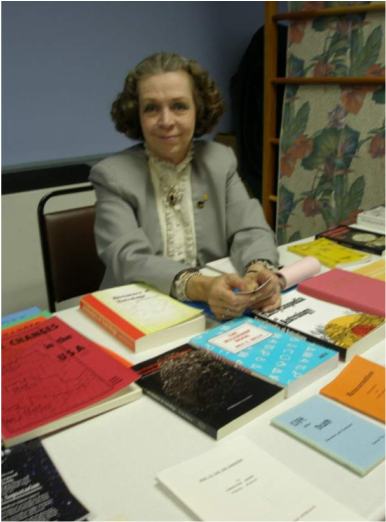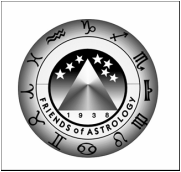I can best explain this development in market analysis through my own experience. I became interested in the stock market in the late sixties by reading the Edwards and Magee and the Jiler books on technical analysis. Pattern perception, valuable as it is, usually does not tell the trader when a pattern will conclude or will manifest. In the seventies, Hurst wrote a book about the application of cycles to assist in this task. This led me to an interest in cycles. A study of market cycles that had been isolated by the Foundation for the Study of Cycles demonstrated that some of the stock market rhythms were the same length as those of planetary periods, so I began to analyze the relationship between prices and planets. In the late 1970s, a computer program was designed for this purpose; the work was born on Lotus spreadsheets in the early 1980s. The first program created specifically for this purpose came on line in 1986.
Most efforts in the area of market prediction aim to associate time series and data that are believed to be related to the market. The dilemma is that almost all of the data is in the past. When I first learned about the technical patterns known as triangles, I first saw a pattern that defined a potential turning point in the future-namely, the intersection of the two lines that defined the triangle. The next time that I encountered such a valuable set of indicators was when George Lindsay explained day counts from previous highs and lows. Bob Prechter’s explanation of the Elliott wave was the last non-planetary technique that fired my interest.
Planetary positions can be determined far in advance with a high degree of accuracy. The trick is to associate the phenomena with the price series in question. We can test by either looking at which phenomena are significant at highs and lows, or we can look at phenomena to see how these affect the price series in question.
Once we do this, we will find that:
1. The phenomena has no effect on the price series under study
2. The phenomena has some effect.
In the latter case:
3. It is coincident with highs
4. It is coincident with lows
5. It is coincident with either one.
INDIVIDUAL PHENOMENA
Individual phenomena may enable one to zero in on specific days of top or bottom. Phenomenon includes angles between planets (aspects) as they move through space, new and full moons, eclipses, etc. These are separate from cycles, which are described below.
The effect that such an event has upon a market can be determined by calculating the percentage change in a market in the days before and after the event. There are several ways to look at the results. First, one can examine the “batting average”, i.e., how many times the price series moved up or down at the time of the phenomena. Second, we can look at the percentage change in the price series. And lastly, the frequency of occurrence is important. There is little value in an event that has high reliability, good percentage moves, but occurs only once every 50 years. After conducting such research over 20 years, I can advise that there are few events that occur frequently, have a high degree of reliability, and generate sizable percentage moves. I shall present some of them.
The greater value lies in reinforcement, wherein several events occur very near in time that has the same or a similar effect on the price series. Thus, if three events that are all coincident with tops occur on the same day, we have a high-probability potential high. I can make the same observation about potential lows. When there are no phenomena that are correlated to the market, then prices tend to move in one direction. When there are conflicting phenomena, the market tends to trade back and forth.
CYCLESA full cycle would be that described, for example, by the lunar rhythm. If one calculates the market’s movement from new moon to new moon over 28 or 29 days, we have a complete cycle. The most understandable cycle is the annual cycle in the US stock market. All traders know of the traditional summer rally followed by autumn weakness, etc. The calendar is determined by the position of the Sun, so this cycle is the solar cycle.
Please click on the following link for the remainder of this article
http://www.billmeridian.com/articles-files/forecasting.htm
Bill Meridian will be Our featured speaker for the The Friends of Astrology, Inc.
2017 Annual Summer Seminar and Luncheon.
Please follow this link for more information
http://www.friendsofastrology.org/2017-summer-seminar.html
Most efforts in the area of market prediction aim to associate time series and data that are believed to be related to the market. The dilemma is that almost all of the data is in the past. When I first learned about the technical patterns known as triangles, I first saw a pattern that defined a potential turning point in the future-namely, the intersection of the two lines that defined the triangle. The next time that I encountered such a valuable set of indicators was when George Lindsay explained day counts from previous highs and lows. Bob Prechter’s explanation of the Elliott wave was the last non-planetary technique that fired my interest.
Planetary positions can be determined far in advance with a high degree of accuracy. The trick is to associate the phenomena with the price series in question. We can test by either looking at which phenomena are significant at highs and lows, or we can look at phenomena to see how these affect the price series in question.
Once we do this, we will find that:
1. The phenomena has no effect on the price series under study
2. The phenomena has some effect.
In the latter case:
3. It is coincident with highs
4. It is coincident with lows
5. It is coincident with either one.
INDIVIDUAL PHENOMENA
Individual phenomena may enable one to zero in on specific days of top or bottom. Phenomenon includes angles between planets (aspects) as they move through space, new and full moons, eclipses, etc. These are separate from cycles, which are described below.
The effect that such an event has upon a market can be determined by calculating the percentage change in a market in the days before and after the event. There are several ways to look at the results. First, one can examine the “batting average”, i.e., how many times the price series moved up or down at the time of the phenomena. Second, we can look at the percentage change in the price series. And lastly, the frequency of occurrence is important. There is little value in an event that has high reliability, good percentage moves, but occurs only once every 50 years. After conducting such research over 20 years, I can advise that there are few events that occur frequently, have a high degree of reliability, and generate sizable percentage moves. I shall present some of them.
The greater value lies in reinforcement, wherein several events occur very near in time that has the same or a similar effect on the price series. Thus, if three events that are all coincident with tops occur on the same day, we have a high-probability potential high. I can make the same observation about potential lows. When there are no phenomena that are correlated to the market, then prices tend to move in one direction. When there are conflicting phenomena, the market tends to trade back and forth.
CYCLESA full cycle would be that described, for example, by the lunar rhythm. If one calculates the market’s movement from new moon to new moon over 28 or 29 days, we have a complete cycle. The most understandable cycle is the annual cycle in the US stock market. All traders know of the traditional summer rally followed by autumn weakness, etc. The calendar is determined by the position of the Sun, so this cycle is the solar cycle.
Please click on the following link for the remainder of this article
http://www.billmeridian.com/articles-files/forecasting.htm
Bill Meridian will be Our featured speaker for the The Friends of Astrology, Inc.
2017 Annual Summer Seminar and Luncheon.
Please follow this link for more information
http://www.friendsofastrology.org/2017-summer-seminar.html

 RSS Feed
RSS Feed
